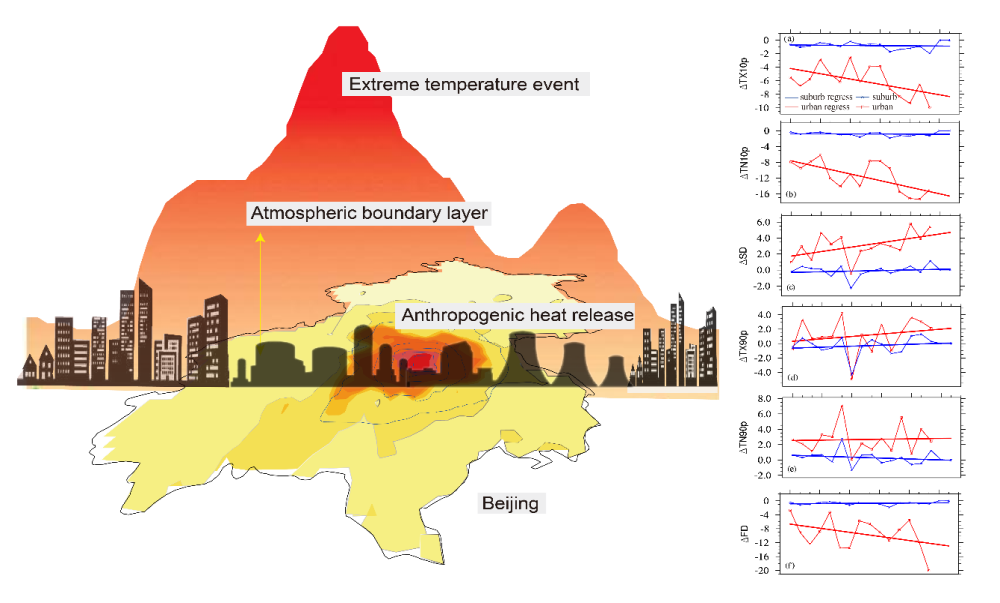中国科学院大气物理研究所大气科学和地球流体力学数值模拟国家重点实验室
State Key Laboratory of Numerical Modeling for Atmospheric Sciences and
Geophysical Fluid Dynamics (LASG)
Institute of Atmospheric Physics, Chinese Academy of Sciences
State Key Laboratory of Numerical Modeling for Atmospheric Sciences and
Geophysical Fluid Dynamics (LASG)
Institute of Atmospheric Physics, Chinese Academy of Sciences

Vol.15/No.15 April 2021
Anthropogenic Heat Flux Increases the Frequency of Extreme Heat Events
"We found the relationships between anthropogenic heat flux and extreme temperature events…" said Prof. XIE Zhenghui, a scientist with the Institute of Atmospheric Physics, Chinese Academy of Sciences. "…including both extreme cold and heat events, based on seven extreme temperature indices by conducting the advanced model."

Anthropogenic heat flux reduces extreme cold events and increases the extreme heat events. (Image by LIU Bin)
Many researchers have studied urban extreme temperature events, including the heat effect of the anthropogenic heat flux from different time scales, urban heat island effect, and the synergistic interactions between urban heat island and heat waves. However, the relationships between anthropogenic heat flux and extreme temperature events have been less studied.
"Anthropogenic heat increased the frequency and trend of the extreme heat events, while the extreme cold events were opposite," said Prof. XIE. Along with Dr. LIU Bin, XIE developed a case study of Beijing, China, analyzing anthropogenic heat data based on energy consumption. Using the Advanced Research (ARW) version of the Weather Research and Forecasting (WRF) model, they implemented a dynamic representation scheme of urban anthropogenic heat release. Their full research is published in Advances in Atmospheric Sciences.
By analyzing the dynamic process of atmosphere's boundary layer, the team also found differences in seasonal heating efficiency. This research might help to mitigate the impact of extreme temperature events in different seasons.
Citation:
Liu, B., Xie, ZH., and Coauthors, 2021: Increases in anthropogenic heat release from energy consumption lead to more frequent extreme heat events in urban cities. Adv. Atmos. Sci., https://doi.org/10.1007/s00376-020-0139-y
Link: https://link.springer.com/article/10.1007/s00376-020-0139-y
Add: No.40, Huayanli, Beichen West Road, Chaoyang District, Beijing P.O. Box 9804, 100029, China
E-mail: lasg_newsletter@lasg.iap.ac.cn
Editors: Chuanyi Wang (wangcy@lasg.iap.ac.cn), Kangjun Chen(ckj@lasg.iap.ac.cn)
E-mail: lasg_newsletter@lasg.iap.ac.cn
Editors: Chuanyi Wang (wangcy@lasg.iap.ac.cn), Kangjun Chen(ckj@lasg.iap.ac.cn)